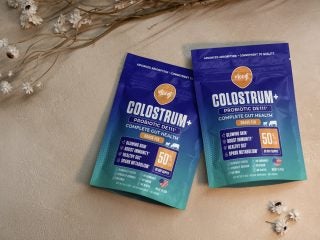Food safety is now a major consideration among consumers amidst several reports of harmful factors that affect the food we eat, such as livestock and poultry diseases, contaminations, genetically modified organisms (GMOs) and others. Meat constitutes a major part of our diet and consistently figures among the items in our grocery list. Thus, to ensure that we are bringing home meat products that are safe to eat, we need to check and consider several things before we put any meat or meat products in our carts.
Check the Labels when Buying Meat
When you go to the grocery, meat packages have a label on the meat type (beef or pork), the primal cut name (chuck, rib, loin, etc.) and the more specific subprimal cut name (ribeye steak, sirloin steak, chuck steak, etc.). When it comes to food quality, there are two organizations that regulate and inspect meat, poultry, eggs and grains: The United States Department of Agriculture (USDA) and the Food and Drug Administration (FDA). Inspection for wholesomeness of food for human consumption is mandatory. Grading for quality is an inventory and thus grading is requested and paid for by meat and poultry producers and meat processors.
All meat packages have the inspection stamp from USDA, which means when you see the inspection stamp, you are assured that it is safe to be consumed. While grading is a voluntary process, most meat packages have the grading stamp as well. When you see both stamps in your meat package, you can be at least sure that the meat has been inspected and is of good quality. Beef that is sold to consumers, for example, is graded Prime, Choice or Select and is based on both the quality of the meat in terms of flavor, tenderness and juiciness; and yield grades refer to the amount of usable lean meat on the carcass. Also, the information on the package for ground meat is different from whole pieces and cuts of meat. It is presented as a proportion of percent lean meat to percent fat. For example, the package may read as 80% lean, 20% fat. Poultry is graded A, B and C, with A as the grade you will find in retail. Veal, and lamb follow the same grading as beef, while pork doesn’t have an established grading system yet.
Be Extra Vigilant When Ordering Meat Deliveries
Ordering meat online to be delivered right at your doorstep can be a trickier task than personally buying meat from the grocery. First, you don’t get to see the actual meat cuts and meat products and read the labels. Second, you don’t get to personally inspect the quality of the meat and rely only on the guarantee of the meat producer. If your meat producer guarantees that their beef cuts and meat products come from a grass fed beef farm, you have the right to validate the claim as a consumer. Check if the producer is transparent about their farm raising and meat processing practices. A plus factor would be if the producer will allow pasture tours or visits for you to personally see the cattle and their grazing environment. You can also check with the USDA and FDA websites if the meat coming from the producers undergoes their inspection process. Once you have been able to ascertain some or all of these factors, you can then place your orders with a sense of confidence that your ordered meat or good quality.
Inspect Meat Using Your Senses
Three of your senses come in handy when it comes to checking the quality of meat and poultry: sight, smell and touch. Generally, fresh meat firms the touch and regains its form when pressed. Also, check the packaging for tears, holes or excessive amounts of liquid. Check for off odors and make sure that the meat is cold to the touch. Here are some of the basic things to check for meat and poultry.
Pork
Pork should have a pinkish-red color, with the fat white in color. There should be no dark spots in the fat. Watch out for pale colored meat. Also, keep in mind to notice an off odor from the pork. The bacteria produce stench or odor, so when the meat gives an off odor, it’s best not to take chances.
Beef
The typical color that we look for in beef is bright red or cherry red. When beef is placed in a sealed bag, the color is dark purplish red. Once the seal is opened and the beef is exposed to air the meat reacts with oxygen in the air and turns the color red. As beef ages, it tends to turn gray in color, which can indicate that the meat is either old or lacks oxygen. Again, watch out for off odor from beef. Also, bacteria produce slime, so if the meat feels all slimy, do not take chances.
The best cut for beef so far is called tri tip. There are a lot of meat cuts but so far this is the best though it is lean but tender and rich in beefy flavor. It also produces an unbelievably juicy slice of roast. So, the next time you buy beef, make sure to check on some tips on how to cut tri tips.
Lamb
Lamb meat should be soft pink to red color. The fat and marbling (flecks and streaks within the lean sections of meat) should be white. Check for meat firmness by lightly pressing the meat. Fresh lamb meat gets to recover its form right after pressing.
Poultry
Chicken and turkey meat should be pink. Color variants include bluish-white to yellow, depending on the breed, exercise, age and/or diet. Colors to watch out and avoid are gray, purple and green. Avoid poultry with these discolorations around the neck and having dark win tips.
Be Careful with “Sell by” and “Use by” Dates
To ensure good and safe purchase of meat, it is wise to know and follow the “use by” and “sell by” dates. The “use by” date is the recommended date that meat should be used. The “sell by” date is the date by which the product, including meat, should be sold or removed from shelf life. Manager’s special meat and poultry mean the “sell by” date is near. If you purchase manager’s special meat, it is recommended that you cook and consume the meat within the day you purchased the meat. It is generally safe, and you also get to save from the discounted price.
Getting meat that is fresh and safe to eat from the shelf to the dining table is a practice that should be done consistently. Although discounts and promos can be attractive offers, it is still recommended that the meat should be carefully checked before you purchase it. Read the labels, use your senses to check and ask the assistance of store personnel in verifying the freshness and safety of the meat or meat products for consumption. When it comes to food, it’s always better to be safe than sorry.


















